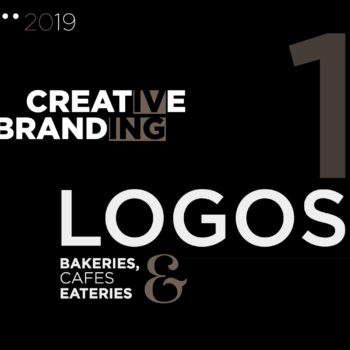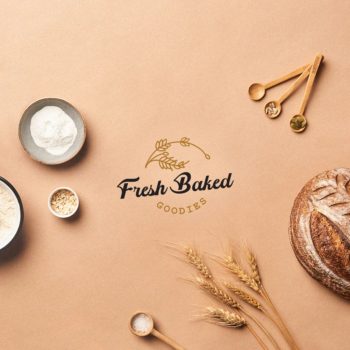It was in 1704 when the first newspaper ad in America tried to sell a house on Long Island. And since then, the advertising industry has gone through a vast transformation.
From street criers in Ancient times to modern-day one click away advertising campaigns, just about every possible method of getting someone to tell about your product and service has been tried. However, over the years, we have seen dozens of ads that have done much more than just telling about the products and services. A few of them have admittedly been more successful than others at captivating the minds of audiences worldwide. They have impacted the way we talk, the way we walk, the way we dress up, the way think – to sum up, the basic things in our day to day life we do.
These campaigns have left and mark on our minds that we still talk about them. Because of the impact, they had on the growth of the brand, and because they manage to hit on some universal truth that allows us to remember these campaigns years after so many years. Some of us might not have even been born when these campaigns first aired.
But what is that oomph factor these campaigns had? Let us dive together and have a look back at these iconic campaigns. But before that let’s understand what a Marketing Campaign is and why is it important?
What is a Campaign?
In a short and simple language, a campaign is an organized, strategized effort to promote a specific goal, such as raising awareness of a new product/service or capturing feedback. The main aim is to reach customers in a variety of ways and involve a combination of media. It includes email, print advertising, television or radio advertising, pay-per-click, and social media.
It doesn’t include all marketing efforts for a brand. The word “campaign” is defined as “a connected series of operations designed to bring about a particular result.”
Why is Campaign so Important?
Campaigns contribute a lot toward a company’s bigger picture. They can vary in size and scope, but they all typically deliver the same benefits when executed well and strategically. Main benefits are –
- It makes the company memorable
- It boosts Brand Awareness
- It promotes a focused effort that guides consumers towards the desired action
- It Attracts New Customers
- It enhances Brand personality and emotion.
Apple – Get a Mac
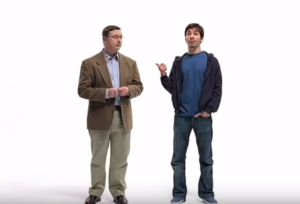
Apple has long been heralded as THE leader when it comes to technology, a title they’ve earned through beloved products and clever, savvy and visually-appealing marketing efforts.
The campaign, starring Justin Long, “I’m a Mac,” and John Hodgman, “I’m a PC,” seamlessly created brand associations with the two different personalities – the cool, laid-back Mac versus the old, nerdy, outdated PC. Steve Jobs highlighted the difference between Macs and PCs — and particularly why Apple computers kicked their competitors to the curb. The U.S. ads of the campaign ran for the next few years, with 66 television spots in total.
Lesson – The campaign is a great example of Apple’s approach and how the company built its brand identity and loyal following by giving a brand face and a Brand personality.
Volkswagen – Think small
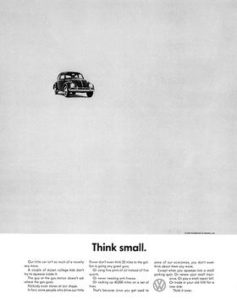
It will be not wrong to say this was the Greatest Print Campaigns of All Time. Volkswagen’s “think small” campaign for the Beetle was the first introduction to North America. It just not turned a revolution in automotive advertising but changed the entire industry. Before the Beetle hit the market, automotive marketing copy was full of bluster, and the images were flights of fancy, long lines and a lavish lifestyle.
The clean, simple photography on a white background emphasized the Beetle’s compact and practical form. The marketing copy for the “Think Small” campaign was pure genius. It may seem nothing big nowadays, but it was a revolution in a world where Americans grew up obsessed with muscle cars, horsepower, and tire smoke. Making the car small, when the convention was to make it fill the page, was also novel. The simplistic approach to design and layout was opposite to the advertising norms of the time.
The Beetle has sold more than 21.5 million units worldwide in the years since, so clearly the marketers did something right, don’t you think so?
Lesson – The most important thing is to challenge perceptions and acknowledge them. Volkswagen needed American consumers to start buying small cars at a time when vehicle size was related to money and power. Instead of shying away from the fact that the Beetle is a small car, they accentuated the fact – making it a virtue rather than a foible. The other my favourite lesson is the power of Copy. The print design may be about the image more than the words, but a copy is still important.
Marlboro – The Marlboro Man
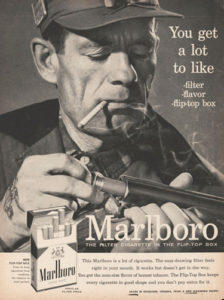
Philip Morris began a legacy of bold moves to meet market challenges by taking a virtually unknown woman’s cigarette. Later, they introduced it with a new masculine face and filter amid the first lung cancer reports. What was originally a cigarette marketed as mild as May to attract a primarily women audience, all at once gained a filter and became a man’s cigarette. The new mascot, the Marlboro Man, exuded rugged manliness to position Marlboro as a filter with flavour. The models were ranged from rough cowboys and sailors to powerful businessmen and academics. One thing was – a military-inspired tattoo on the back of his hand.
The slogan “Come to Marlboro Country” promised every ordinary man the prospect of transforming himself into a rugged and macho cowboy by just lighting up Marlboro. Soon, the Marlboro Man became the symbol of Masculinity and the advertising forever. By the end of 1955, Marlboro sales increased more than 3,000 per cent.
Now we understand why it is said to be one of the most brilliant advertisement campaigns of all time.
Lesson – Neither creating a strong brand is fast or easy nor is re-branding. Ad campaigns take stamina and a willingness to keep the message consistent, even if it takes months to see any progress or even changing the face of the Brand. The Marlboro Man wasn’t built overnight. The key to the campaign’s success was patience.
Coca Cola – Share a Coke
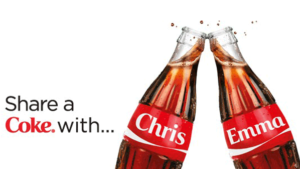
The Coca-Cola Company is best known for its innovative marketing initiatives and this would have been incomplete if we hadn’t included it. In 2014, they launched their “Share a Coke” campaign. The campaign had a variety of Marketing contained ATL, BTL strategies as well as an element of experimental marketing where customers could custom make their bottles. But the real win was from Digital.
Each bottle mentioned the hashtag #shareacoke. Consumers were encouraged to find bottles with names that held personal relations to them, share them with friends and family, and then tweet about their experiences using the hashtag #ShareaCoke. The company also provided alternative pre-printed options with the slangs like as “Bestie,” “Star” or “BFF,” for those with more unusual names that were not represented on the bottles.
The campaign was first launched in Australia in 2012 and the then after in the United States in the year 2013. In 2015, the company increased the personal names represented from 250 to 1,000. After that song lyrics were added to the bottles’ packaging so that fans could share music in addition to names. The campaign continued to evolve in creative ways.
Lesson – Consumers Are Prompted to Create Online Media Content to convey a personal experience. By reflecting on their personal experiences, consumers felt like their lifestyles were the centre rather just a promotional tool. Moreover, the call to action was also strong. Catchy and easy to remember, the slogan simply emphasized people to buy more products.
De Beers – A Diamond is forever
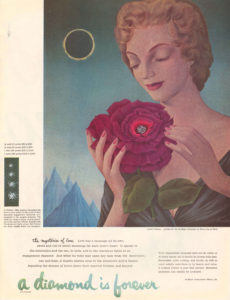
In 1947, De Beers was looking for a campaign that would help boost the sales of diamonds which had fallen during the Great Depression. But today, the four-word sentiment has become one of the most recognizable brand slogans of all time.
rances Gerety was a woman working in a ‘man’s world’ in an advertising company. De Beers was her main account – one of the ‘women’s products’ she’d been hired to write for. In 1947, she had just finished working on a series of ads and was heading to bed, when she remembered she’d forgotten to create a signature line for her latest campaign. Exhausted, she just jots down something on a slip of paper before falling asleep. The following morning, she unclearly presented it to a boardroom of men. Initially met with hesitancy due to its unusual style, her line, ‘A Diamond is Forever,’ would go on to transform both the diamond forever. In 1999, ‘A Diamond is forever’ was named ‘The Slogan of the Century’ by Advertising Age.
The slogan perfectly captured the sentiment De Beers was going for – that a diamond, like your relationship, is eternal.
Lesson – Playing with culture the world over, transcending race, religion and language can sometimes turn out to be good. And in a world of short-term fixes where so much is disposable, symbols of enduring strength are more important than ever – A Diamond is forever!
Red Bull – Stratos

In the year 2012 energy drink, Red Bull broke new ground in the field of experimental marketing. They took it to another level. To the edge of space – to be more precise. It sponsored Austrian skydiver Felix Baumgartner in his record attempt to freefall and then parachuted back to Earth. Baumgartner dropped from near-space (23 miles high) back to the Earth’s surface. This ambitious project cum campaign was named Red Bull Stratos.
It was an amazing display of the value of human hardship, of adventure, investment and commitment. The fact that this mission to the edge of space was funded and created by a brand is, quite simply, remarkable.
The brand claimed that Red Bull Stratos was just not a marketing campaign but a whole more than that. It was the first and foremost, a scientific mission documented by our broadcast and editorial teams for seven years. It was also the world’s most-viewed live stream. Of course, not every brand has a fearless Felix to deliver moments of greatness, but you cannot ignore the pace of change in the Brand’s market.
But Despite Red Bull’s claim that this was not a marketing campaign, the energy drink brand used footage from the project in marketing campaigns in the year to come. Another video of Felix Baumgartner POV was also released about a year after the history-making jump racked up another 5 million views.
Lesson – The campaign has not only underlined the brand’s authentic link to extreme sport and innovation, it has also provided its employees with a motivation bigger than energy drinks for the rest of their lives. It simply embraces a sense of purpose. It also shows that Beyond Big Society: do more than grow your bottom line
Creating iconic marketing campaigns today might mean going viral, but the basic elements of good marketing have not changed as much as you might think. There is a lot to learn from these Ads, so be sure to study them and whatever new ideas take over the world. Also do let us know in comments about your favourite campaigns.
If you’d like to implement your marketing campaigns, we are here for you. Get in touch with us today and start creating some iconic campaigns!




